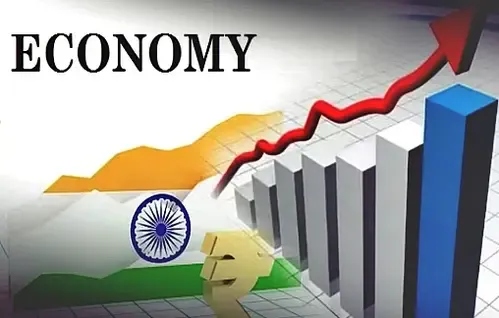How Will the Increased RBI Dividend Impact GDP Growth?

Synopsis
Key Takeaways
- RBI dividend reaches Rs 2.68 trillion, exceeding expectations.
- Boosts fiscal support and offsets potential tax shortfalls.
- Projected 0.15% increase in GDP.
- System liquidity expected to improve significantly.
- 10Y yield predicted to decline to 6.0% by CY25 end.
New Delhi, May 26 (NationPress) A recent report indicates that the additional gain from the enhanced RBI dividend is poised to help mitigate possible declines in tax revenues and nominal GDP growth. This robust RBI dividend is anticipated to further enhance system liquidity.
This year marks the third consecutive instance where the actual dividend surpasses the initially budgeted figure, resulting in an additional fiscal boost equivalent to 0.15% of GDP.
According to Emkay Global Financial Services, "we retain our FY26 gross FD/GDP target at 4.4%, consistent with the budget estimate."
“We foresee Q1 FY26E operating in a state of super surplus liquidity (with June projected at Rs 4-4.5 trillion), driven by a substantial RBI dividend of Rs 2.68 trillion and a marked seasonal decline in currency in circulation (CIC), alongside RBI open market operations (OMOs),” the report elaborated.
The RBI has declared a historic dividend of Rs 2.68 trillion to the Central Government for FY25, exceeding the Rs 2.1 trillion anticipated in the FY26 Union Budget by approximately 28%.
Although the annual report is pending release, which will provide comprehensive details about the balance sheet, the report suggests that the record dividend is likely attributed to heightened gross FX sales of $398 billion in FY25, a significant increase from $153 billion the previous year. This surge enhanced foreign exchange income, increased interest income from government securities, and reduced provisions for revaluation losses on assets, coupled with potential mark-to-market gains on both foreign and domestic asset holdings.
These developments have also allowed the RBI to elevate the range of the Contingent Risk Buffer (CRB) while keeping provisioning at the upper limit of the revised band (7.5%).
“We maintain our outlook that the terminal policy rate could reach 5.25%, while system liquidity is projected to conclude FY26 with a surplus of 0.9-1.1% of Net Demand and Time Liabilities (NDTL),” the report added.
Improving transmission mechanisms are expected to facilitate better real sector dissemination.
“We predict the 10Y yield will decline to 6.0% by the end of CY25, with a likely strengthening of the bull steepening bias in the near future,” it continued.









